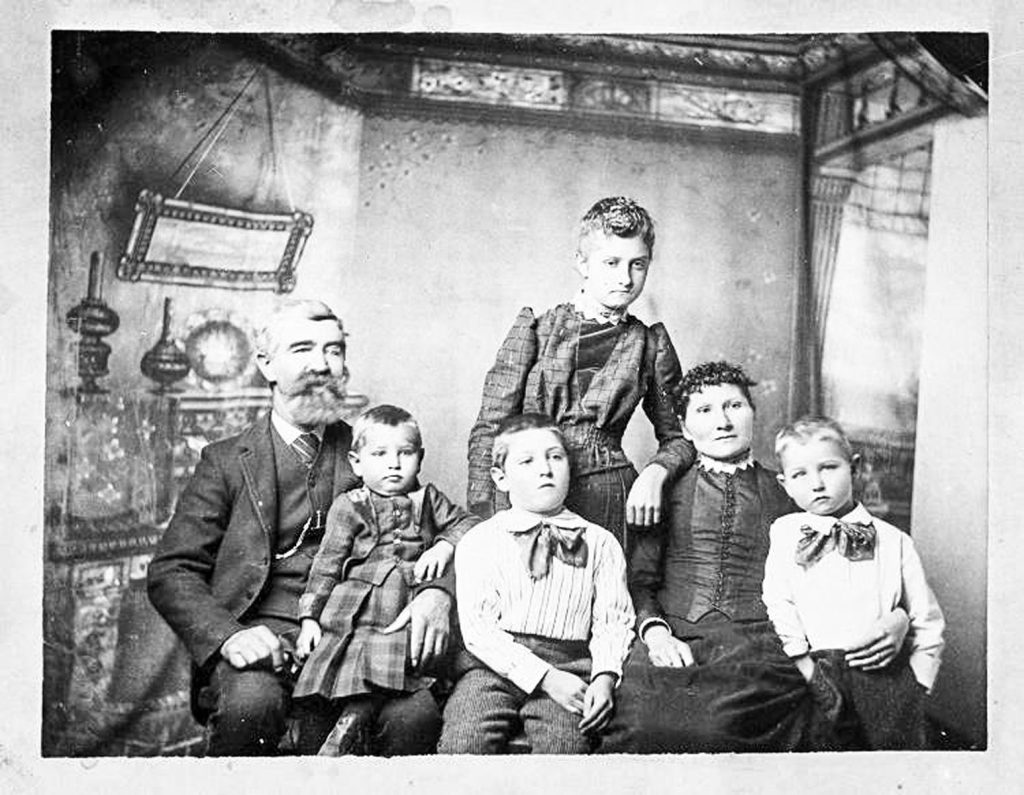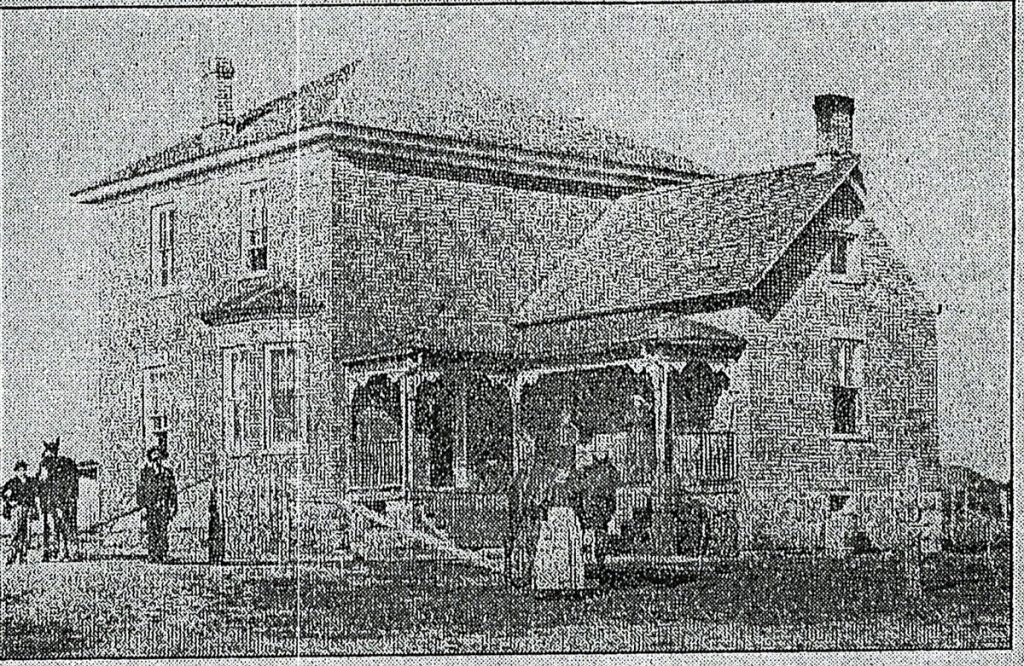Persistence and desire: the Doepkes of Lake Gulch

The Doepke Family, Anna Maria seated and absent the deceased son. A visiting relative is standing.
Why do men, like my German father, leave families and cross oceans and plains for a dream? What type of energy drives them, despite all obstacles, known and unknown?
Frederick and Charles Doepke must have agreed that their dream was possible when immigrating to the United States in 1853. Finding Minnesota not to their liking, the brothers took what they had, journeying to Colorado in an ox-drawn wagon. The reasons they chose the higher elevations of Lake Gulch are less important than the reality: they made it work. By 1861, the brothers had filed their homestead claims, also acquiring adjoining land south of Castle Rock. They named their holdings Twin Creek Ranch and began with a modest, 300-square-foot cabin. The brothers’ total landholdings would later reach as high as 2,000 acres.
Frederick married his young bride, Austrian Anna Maria Pechtl, in 1876. She was 19 at the time, having arrived on these shores when only three years old. Together, they brought a daughter and four sons into their lives, one son dying in early childhood.
Frederick was many things: farmer, rancher and brick maker among them. Local sun-dried clay and sand, a six-brick mold and horsehair plaster allowed the brothers to build their two-story Victorian home. Crops flourished under the brothers’ hands, including oats, corn, hay and wheat. Shorthorn cattle and Belgian draft horses were favored breeds and they were raised skillfully on Twin Creek property.
A learned man and described as literary by some, Frederick was the organizing force behind the first Lake Gulch School. This was a major feat of persuasion, as there were only 26 property owners at the time who could be taxed.
Anna Maria was every bit a force equal to her husband’s. Meticulous housekeeper and extraordinary cook, Anna’s organizing talent also made for numerous social events which included dances, celebrations, picnics and card parties. A player piano in the home always livened things up.
She was also likely behind the family spirituality and regular attendance at Castle Rock’s Sunday Catholic Mass (the building more recently called Scileppi’s at the Old Stone Church restaurant). Taking Catholicism a step further, it was a family custom to join nuns from Denver in a yearly solicitation to help fund their Denver orphanage.
“Excitement” was always in the offing, rattlesnakes included. So common were reptile encounters, strings of rattles hung just outside the kitchen. Perhaps the most notable scare was the time when one of Frederick’s buggy horses managed to slip its ties to the hitching post and started to run off. Seeing it happening, he grabbed the reins and, absent any control, was dragged through the streets of Castle Rock finally striking a freight train at a Wilcox Street crossing. The buggy was mangled and Frederick himself suffered considerable embarrassment and bruises.
Frederick died in 1906. His influence and loss were widely felt, with local papers noting that he was not just known throughout the county but also the entire West. Anna died in 1929 after an illness that had burdened her for a year.
Twin Creek Ranch would go on to become Douglas County’s first historic landmark.

The Twin Creek home built by the brothers Doepke.The Twin Creek home built by the brothers Doepke.
By Joe Gschwendtner; photos courtesy of Douglas County archives historic collection